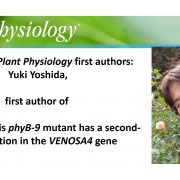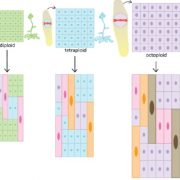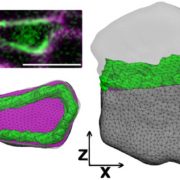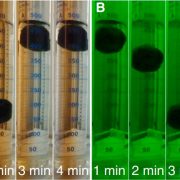
An Improved Tool for Mapping the Membrane-Associated Protein Interactome
Blog, Plant Physiology, Plant Physiology: News and ViewsProtein-protein interactions mediate fundamental biological processes. Yeast two-hybrid assays can be used to detect protein-protein interactions in a fast and large-scale manner. However, in traditional yeast-two hybrid assays, the prey and bait proteins must be located in the nucleus to activate reporter…

Recognizing Plant Physiology first authors: Yuki Yoshida
Blog, Plant Physiology, Plant Physiology: Author ProfilesYuki Yoshida, first author of The Arabidopsis phyB-9 mutant has a second-site mutation in the VENOSA4 gene that alters chloroplast size, photosynthetic traits, and leaf growth
Current Position: Postdoctoral researcher in Graduate School of Science at The University of Tokyo.
Education: PhD and…

What We're Reading: Sept 7th
Blog, WWR Full PostReview: Harnessing synthetic chemistry to probe and hijack auxin signaling
Auxin has been studied since Charles Darwin observed the phototropic response. More recently, chemical genetic approaches using auxin agonists and antagonists have been applied to studies of auxin. Torii et al. review how…

Plant Cell Editor Profile: Joseph J. Kieber
Blog, The Plant Cell, The Plant Cell: Editor Profiles
(Reprinted from The Plant Cell 10.1105/tpc.18.00110)
At the crux of understanding plant biology lies the intricate hormone circuitry coordinating morphological and physiological changes as plants grow and adapt to their environment. As a curious middle school student in Locust, New Jersey, Professor…

Communicating Science in the Age of Fake News: Broadening Your Impact
Blog0 Comments
/
ICAR2018 Workshop on Public Engagement, June 28, 2018
Communicating Science in the Age of Fake News: Broadening Your Impact
ICAR2018 Workshop on Public Engagement, June 28, 2018
Background
As part of an NSF-funded Research Coordination Network grant, the North American Arabidopsis Steering Committee…

What We're Reading: August 31
Blog, WWR Full PostThis week's edition is guest edited by Arif Ashraf, a PhD student at Iwate University, Japan and Graduate Student Ambassador of ASPB. His research interest is understanding the hormonal interplay in primary root development of Arabidopsis thaliana. He blogs about plant science (http://www.aribidopsis.com/).…

Plantae Fellow Danielle Roodt wins prestigious award
BlogSouth African Women in Science Awards
Danielle Roodt, a Plantae Fellow and PhD candidate in the Forest Molecular Genetics (FMG) Programme of the University of Pretoria, was recently awarded a South African Department of Science and Technologies ‘DST-Albertina Sisulu Doctoral Fellowships’.
The…

Natural Artist: How a Protein Kinase Helps Sculpt the Pollen Grain Surface From the Inside Out
Blog, The Plant Cell, The Plant Cell: In BriefFinding genes that function in plant development often requires mutant screening, but probing the wealth of natural variation can provide important insights as well. A major focus of developmental biology is uncovering the mechanism behind cell polarity, that is, how components are deposited asymmetrically…

Busted: Finding Cells Whose Division Planes Defy Prediction
Blog, The Plant Cell, The Plant Cell: In BriefEvery plant organ, from tuber to tepal, is formed by cells that divide along precisely placed cell plates. While much is known about the molecular biology behind cell plate formation (e.g., Gu et al., 2016), why cells divide where they do is much less clear. Dividing cells have much in common with soap…

